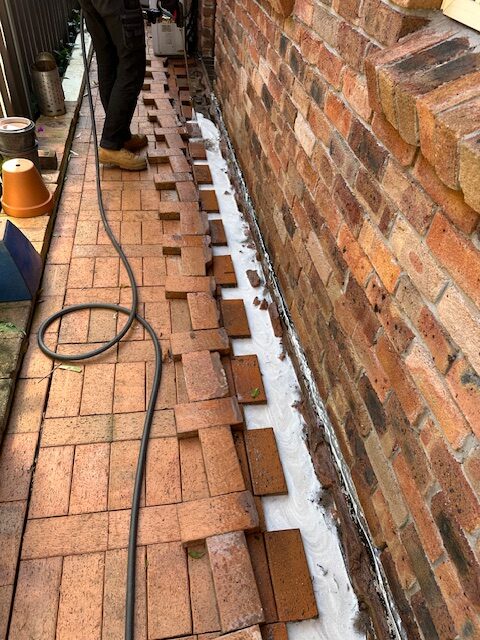Landscaping plays a pivotal role in not only enhancing the aesthetic appeal and market value of your property but also in requiring meticulous planning to sustain the integrity of vital termite barriers. These protective systems are essential for shielding your home from potentially devastating termite infestations. Unfortunately, some landscaping choices and upkeep practices may unintentionally jeopardize these barriers, weakening their protective functions. This comprehensive guide aims to equip you with critical strategies and insights to ensure your landscaping decisions do not threaten the effectiveness of your termite defenses while successfully preserving these crucial protective systems surrounding your residence.
Exploring the Essential Function of Termite Barriers in Protecting Your Home
Termite barriers are specialized protective measures, whether physical or chemical, strategically placed around or beneath your home to effectively prevent termites from infiltrating your property. Every homeowner should prioritize establishing a comprehensive termite management system, and gaining a clear understanding of the specific type of barrier in place is crucial for effective property maintenance. A straightforward method to verify this is by checking the details found in your electrical meter box. These barriers are paramount in safeguarding structures, particularly in regions like Sydney’s Hills District, where termite activity is alarmingly prevalent.
- Physical Barriers: Constructed from robust materials like stainless steel mesh or graded stones, these barriers are installed below a building’s foundation to effectively thwart termites from tunneling through.
- Chemical Barriers: This approach involves applying liquid termiticides to the soil encircling a structure, establishing a treated zone that deters or eradicates termites from accessing your home.

Recognizing Landscaping Practices That Threaten Your Termite Barriers
Numerous common landscaping practices can unwittingly damage or undermine the structural integrity of termite barriers, resulting in vulnerabilities that could lead to significant infestations. Grasping these practices is vital for maintaining effective protection against termites and ensuring the longevity of your barriers.
1. Planting Too Close to Your Home
Positioning plants, shrubs, or trees too near your house can introduce various problems:
- Roots may infiltrate physical barriers or disrupt the treated soil in chemical barriers, significantly lessening their effectiveness.
- Dense vegetation can trap moisture near your building’s foundation, fostering an inviting environment for termites to thrive.
2. Adding New Soil or Mulch
Introducing layers of soil or mulch near the foundation can create a bridge over chemical barriers, enabling termites to bypass these crucial protections. Organic mulch is particularly problematic, as it can serve both as food and shelter for termites, rendering it an attractive habitat for these pests.
3. Paving and Hardscaping Projects
The installation of paving, patios, or retaining walls close to your property can disrupt existing termite barriers. The excavation and soil movement necessary for these projects might compromise the chemical seal or create gaps in physical barriers, leading to increased susceptibility.
4. Irrigation System Considerations
Poorly designed or overly saturated irrigation systems can inundate the soil surrounding your foundation. This not only diminishes the effectiveness of the termiticides in chemical barriers but also creates a conducive environment for termite proliferation.

Implementing Landscaping Techniques That Protect Termite Barriers
1. Ensure Safe Clearance from Your Home
- Maintain a minimum distance of 50 cm between plants and trees and your home’s foundation, creating a safe zone that guards against termite entry.
- Opt for smaller, non-invasive plants that are less likely to develop extensive root systems capable of interfering with your barriers.
2. Choose Termite-Resistant Mulch Options
- Select inorganic mulches like gravel or stone, or consider using termite-resistant materials such as cedar or cypress chips to minimize risk.
- Limit mulch piles to a maximum height of 5 cm and maintain them at least 15 cm away from the foundation to reduce moisture retention and discourage termite activity.
3. Avoid Disrupting the Barrier During Landscaping
- Consult a professional before engaging in any excavation or installation of landscaping features near your home to prevent disturbing the termite barriers or termite baits.
- If soil alterations are necessary, it’s advisable to have the barrier reinspected and potentially retreated to ensure ongoing protection against termites.
4. Thoughtful Design Considerations
- Position irrigation systems away from the foundation to prevent excessive moisture accumulation near the barrier, which can attract termites.
- Install root barriers for larger trees to prevent roots from encroaching on the termite barrier and causing potential damage.
- Be cautious of termite reticulation pipes to avoid damaging them during landscaping activities.
Swift Actions to Take if Your Termite Barrier is Breached
In the event that landscaping activities or natural occurrences have disrupted your termite barrier, prompt action is critical to safeguard your home:
- Schedule a Professional Inspection: A comprehensive termite inspection is essential to identify vulnerabilities and ascertain whether termites have breached your protective barriers.
- Reinforce Your Barrier: Based on the inspection findings, physical barriers may require repairs, while chemical barriers might necessitate retreatment or a top-up to restore their effectiveness.
- Implement Regular Monitoring: Routine inspections for termites are vital to ensure that your barrier remains intact and your property stays safeguarded from infestations.
Landscaping Solutions That Strengthen Termite Protection
With careful planning and strategic design, your landscaping can effectively enhance your termite protection efforts:
- Incorporate gravel paths or decorative stones along the foundation to create a dry zone that deters termite activity.
- Utilize raised garden beds with ample clearance from the house to minimize moisture retention near the foundation.
- Regularly trim vegetation to ensure adequate ventilation and reduce moisture buildup, creating an inhospitable environment for termites.

Thoughtful landscaping can be designed to enhance, rather than compromise, your termite barriers. By developing a thorough understanding of how various landscape designs impact termite protection, you can achieve a beautiful and pest-free home environment. For expert termite advice or assistance with maintaining your barriers, reach out to our knowledgeable team today. Let us partner with you to secure your home while you create the landscape of your dreams.
The Article: Termite Barriers for Effective Landscaping Solutions first appeared on https://writebuff.com.
The Article Termite Barriers: Essential Solutions for Landscaping Was Found On https://limitsofstrategy.com





Comments are closed